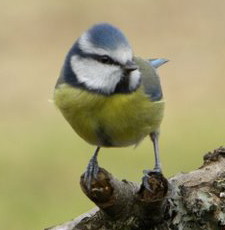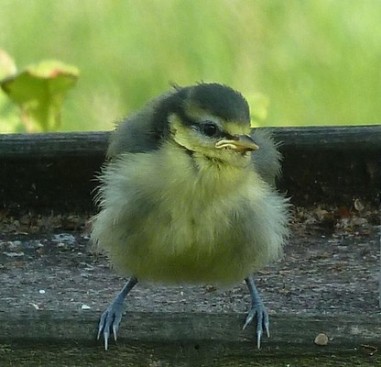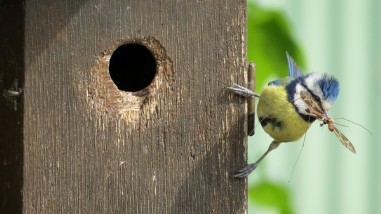Blue Tit
Reports

The colourful Blue Tit is one of our most attractive garden birds. The Eurasian Blue Tit and the related hybrids are native species in areas of the European continent with a mainly temperate or Mediterranean climate. It is also found in parts of the Middle East. In Great Britain the Blue Tit is typically found in deciduous woodland, parks and gardens even in the centre of towns. It is a widespread breeding bird throughout Scotland except for the Western Isles and Northern Isles where it is a vagrant.
At first glance the acrobatic and often apparently cheeky Blue Tit is a blue and yellow bird. A closer inspection reveals bright blue wings, tail and crown, yellow under-parts, greenish back and mantle, white cheeks, and black eye stripe, bib and collar. They also have a white wing bar. The bill is black and the legs are a blue-grey. The sexes are similar, though the female is slightly paler. The juvenile birds are duller than adults and have a greener crown, wings and tail, and yellow cheeks.
Blue Tits seem to be one of the most agile of birds, and expertly hang upside down from feeders and branches, pecking at buds or foraging for insects. They are regular visitors to garden bird feeders. Blue Tits feed mostly on insects, especially caterpillars, and on seeds. In springtime they feed also on pollen, nectar and sap, and in the autumn on berries. In the garden they search among the plants and crevices for insects like aphids, beetles, and caterpillars as well as spiders, but also take peanuts, sunflower hearts, suet and other high energy food from bird feeders. They are also opportunists. Many of us remember how they used to peck through foil milk bottle tops for the cream.
Nesting in cavities in trees they occasionally choose an unusual site such as a pipe or letterbox, but will readily use nest boxes. The nest is a cup made by the female from moss, wool, dead leaves, spiders' webs, and lined with down. The clutch of eight to twelve eggs is incubated by both birds for about a fortnight. The hatching is timed to try to coincide with the availability of caterpillars feeding on the fresh green leaves of trees in spring. Blue Tits put all their eggs in one basket and rarely double brood. The birds fledge about a fortnight after hatching
In winter they are usually seen in small groups with other tit species plus other small birds like Treecreepers and Goldcrests. The formation of these roving bands seems to increase the chances of finding food and thus surviving the winter. The oldest Blue Tit recorded was one that was ringed in the Czech Republic. It had lived for 11 years and 7 months. The average life span is thought to be less than three years.

